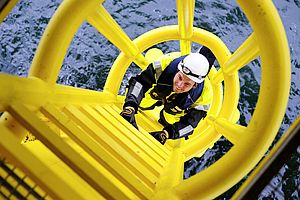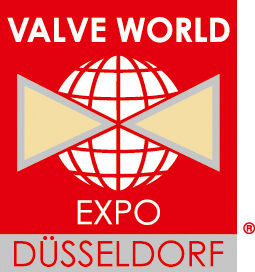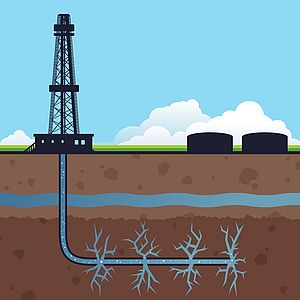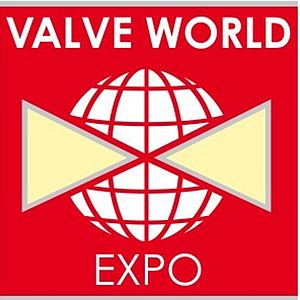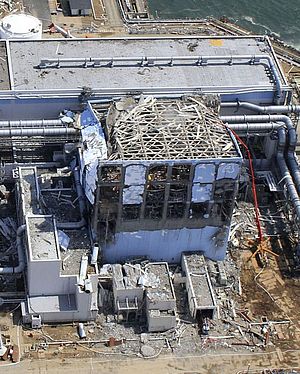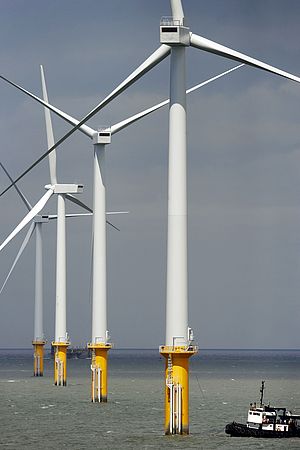Exploring for oil reserves beneath the seabed is associated with high risks. Innovative technologies help minimise the dangers.
Worldwide outrage was huge after the explosion and sinking of oil platform „Deepwater Horizon“ in the Gulf of Mexico, which was contaminated by 780 million litres of oil. As a result, the USA put all permits for deepwater exploration in its national waters on hold. The environmental disaster will however not put a stop to extracting oil from below the sea bed – deep-sea oil is simply to lucrative a business for corporations. Nonetheless, energy giants such as BP have changed their views. New standards are supposed to minimise risks and prevent a disaster like the one in April 2010, as well as to quickly contain contamination should an accident happen. Better technology from makers of drilling platform components will help achieve this aim. This poses a new challenge for the valve industry.
Deep sea output to double
The growing worldwide need for huge amounts of oil and gas is seeing companies explore the deep sea, as land-based resources are increasingly running dry. „In the last ten years, more than 50 percent of new oil and natural gas reserves were discovered beneath the sea bed“, report Dieter Franke and Soenke Rehder of the German Mineral Resources Agency, a department within the Federal Institute for Geosciences and Natural Resources. At the same time, discoveries in shallow waters have been decreasing. In the last five years, discoveries in the deep sea, i.e. in depths of 300 to 1500 metres, and the ultra-deep sea 1500 metres below the surface, have been responsible for nearly 40 percent of new discoveries in the last five years. According to a research report, the German Mineral Resources Agency expects deep sea oil output to double by 2015.
The deeper, the riskier
Greater depths also mean higher risks. The depth of 1500 metres made sealing off the sunken Deepwater Horizon’s oil well a difficult affair. Exploration is already being performed in greater depths: since 2010 the “Perdido“, operated by Shell, has been exploring in depths of 2450 metres in the Gulf of Mexico – a new record. An end to the rapture of the depth is not in sight. The greatest depth, which is below 5000 metres, is also set to be exploited: BP has already set its sights on the Tiber oil field.
The Gulf of Mexico is part of the so-called Golden Triangle, alongside Brazil’s Atlantic coast and West Africa. Even the Arctic has become interesting for energy corporations. It is assumed that 20 to 25 percent of the world’s undiscovered natural gas and oil reserves lie beneath the ice. Each region coming in question for deep sea production is located at the continental margins. The larges oceanic areas, which in parts are even deeper, are not of interest for the energy giants, as their oil and gas potential is low.
Improving safety
Yet are companies equipped for the challenges posed by the ultra-deep sea, where pressure is great and the well is far away and can’t be reached quickly in the case of an emergency? BP has drawn conclusions from the 2010 oil catastrophe in the Gulf of Mexico and has raised the bar for technologies used to explore and exploit the deep-sea, due to the special requirements the environment poses. „BP Exploration & Production Inc. (BPXP) will implement a new set of deepwater oil and gas drilling standards for its operations in the US Gulf of Mexico, demonstrating the company's commitment to safe and reliable operations“, the company declared, adding the new measures were „voluntary.“ "We believe the commitments we have outlined today will promote greater levels of safety and preparedness in deepwater drilling", explained BP group chief executive Bob Dudley. BP also added it wanted to „promote greater levels of preparedness“. Moreover, the energy giant wants to „help rebuild trust in the company following last year’s accident and oil spill”, states James Dupree, BP regional president, Gulf of Mexico. The announcement also aims to improve the company’s public image.
Higher demands for the safety valve
BP expects a lot more from future blow out preventers (BOP). It failed during the oil spill in the Gulf of Mexico – the safety valve, which was supposed to seal the well in case of an emergency, malfunctioned and refused to be activated later on. BP Exploration & Production (BPXP) will therefore require BOPs to use two blind shear rams to be used on all deep sea platforms in dynamic position mode operating for the company. Blind shear rams cut through the drill string and seal off a wellbore by crimping it shut. In addition, a casing shear ram will also be required as part of the BOP, in order to seal off the pipe.
In the future, BPXP plans to have its BOPs verified by a third party, in order to make sure all testing and maintenance will meet the recommendations of the BOP manufacturer and be inline with industry recommended practice. BP also states it will collaborate with “BOEMRE, the Ocean Energy Safety Advisory Committee, the Center for Offshore Safety and others in a joint technology program focusing on BOP systems.”
Salt water resistant materials
Blow out preventers are not the only components operators of offshore platforms have to rely on. Y-type valves, rotary slides and high pressure angle valve also need to be dependable, as they are used to seal pipes, tanks and stop processes in an emergency. Materials need to be versatile: „All of these valves can be made from special, salt water resistant materials and can be equipped with inner parts designed for application in highly critical environments“, explains German valve maker SchuF Fetterolf. Control valves need to ensure a consistent flow within the body and have as little dead space as possible, states the company. Wear parts need to be easily exchanged and inner parts should be made from carbide, ceramic or have special coatings. „In order to ensure safe and efficient work processes on an oil platform, the large centrifugal pumps need to be protected from any sort of damage“, says SchuF Fetterolf. „Automatic pump protection valves ensure a minimum throughput and the reduction of excess pressure during phases of lighter loads, or during start-up.“ Materials can here for instance be sea water resistant duplex steel with 22 weight percent chromium for the valve enclosure.
Controlling the valve
Working offshore is very risky, as employees work in a danger zone most of the time. Simultaneously, the valves are exposed to harsh conditions, which have an impact on plant availability and life cycle costs. Data from control valves therefore needs to be analysed optimally, in the best case from land. Metso Automation has developed a frame application and associated products for data analysis.
„In a first step, intelligent valve position controllers are installed on each platform and a fitting management software is installed“, explain Niklas Lindfors and Jarkko Räty, of Metso. Offshore works on site are responsible for the controlling the valve‘s actual status. „The next step to improve monitoring is centralisation using a plant management system with control performed by a team of land-based analysts.“ This team is able to monitor and coordinate maintenance tasks on multiple platforms.
Seals – a high performance product
An intelligent valve controller, such as Metso’s Neles ND9000, for example records a control valve’s performance over the course of its entire life-cycle. Metso’s controller saves all data and can be accessed locally or remotely. „Basically, there is no difference if data is accessed locally, or from a remote position a couple of thousand kilometres away“. A device monitor signals if control valves are deviating in terms of performance, alongside the most likely reasons for malfunctioning.
Valves aren’t the only components which have to withstand harsh conditions in offshore oil and natural gas production. Sealing makers also have to shine with high-performance products. EagleBurgmann has discovered offshore platforms as a lucrative market. The company based in Wolfratshausen, Germany, equipped the drillship „Deepwater Champion“ with seals. EagleBurgmann also received an order worth a couple of million euro from Rolls Royce for mechanical seals. In addition, both companies are in negotiations for a three-year supply contract, which will also be worth several million Euros.
Trend to mobile drilling platforms
EagleBurgmann’s courage was rewarded: shaft diametres of 530 millimetres and flange diametres of up to 1.000 millimetres was new territory for the company, especially in regards to the special demands of the high sea. „Specially designed secondary sealing elements provide enhanced durability in seawater conditions as well as good immunity to vibration and pressure fluctuations, and those are two of the outstanding features of this sophisticated solution“, explains the company.
Attractive orders like this are increasing for sealing and valves makers. „As drilling depths increase, the trend is swinging towards mobile drilling platforms“, explains Hauke Schlegel, Chairman of the Marine and Offshore Equipment Industry Working Group of the German Engineering Federation VDMA. Fixed platforms would be too large for the deep sea and economically not feasible. Mobile, swimming island however are more „equipment intensive“, says Schlegel.
Alls sights on Brazil
Brazil is becoming increasingly interesting for the offshore industry. This is not unexpected, as the South American state has vast resources located in the deep waters off of its coast which are waiting to be extracted. More than 220 billion US-dollars will be invested by 2014.
Brazil is also partnering with other countries to use their technologies for oil exploration. Macaé, a fast growing town in the state of Rio de Janeiro, is on the prowl for partners for deep sea extraction. Valve makers, for instance, are in demand. Remote monitoring is also in high demand.
SchuF Fetterolf has also set its sights on the Brazilian offshore market. In order to serve it better, the company has decided to open a second site in Brazil, states CEO Roderick Stanley. The site is located near the offshore oil fields northeast of Brazil. „A lot of customers expect local support from a manufacturer.“ As such, SchuF Fetterolf is already working together with Petrobas.
Tax and environmental barriers
There are several hurdles to take, despite positive experiences in the South American market. „In parts, high import taxes and duties of over 50 percent are levied on valves“, reports Friedrich Appelberg, CEO of Bomafa. Trade barriers, designed to protect Brazil’s businesses, play a large role. Bomafa therefore cooperates with local partners. The proper strategy leads to success.
In certain regions, tax barriers are not the only problems facing deep sea drilling projects, offshore investors and suppliers. Ecological barriers also have to be taken. Environmentalists – as well as some states – view deep sea drilling as a rather risky affair, due to the high requirements in terms of materials and technologies. The plans for the Arctic are a particular grievance.
„In general, we reject developing oil deposits in this region“, declares Stephen Lutter, a marine ecologist from environmental association WWF, in an interview with German newspaper Sueddeutsche Zeitung. There is no infrastructure available in the Arctic. Environmentalists warn that there are no microbes in the arctic, that can „eat“ oil.
A point in case, which Russian oil company Rosneft and its US counterpart ExxonMobil won’t like to hear. Both companies entered a strategic partnership to exploit deposits in the Arctic Kara Sea. A rewarding plan: deposits with a total of five billion tons of oil are assumed to waiting to be developed.
Innovation for more safety
Denmark’s meteorological institute may offer a strategy to make oil exploration safer. According to Susanne Hanson, one of the aims is to set up a warning system. A model can be used to predict how oil will flow in the case of an accident. Within ten minutes, helpers can find out where to find oil.
Energy corporations however won’t be able to eliminate ecological concerns entirely. A very innovative and sophisticated technology offers the possibility to drill for oil with a low amount of risk. Since the oil spill in the Gulf of Mexico, the technology has experienced a massive boost in development.
The valve industry can also contribute. The challenges posed by deep sea drilling could then become an opportunity for the entire sector.
The black gold in the deep sea:
a new challenge for the valve industry
- by Messe Düsseldorf GmbH
- May 17, 2013
- 428 views




